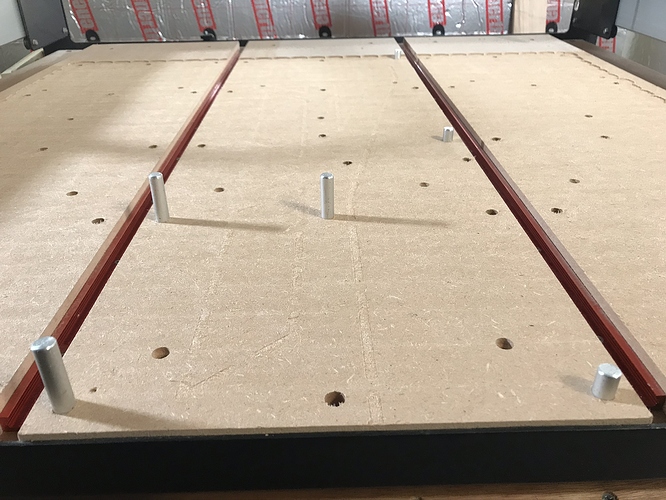Yep, robots that machine stuff are great 
There’s a short thread here discussing approaches.
Short answer is only re-zero the Z, the why is that you’ll never quite get the same X, Y as there’s a small error in any edge finder and you may have cut away that corner in a previous operation. People doing advanced stuff like double sided machining frequently make up a carrier jig with locating pins in the stock to help them flip the workpiece without having to re-zero X & Y.
I found that machining a set of 10mm + clearance holes into my wasteboard for sections of 10mm aluminium rod to easily get things aligned with X & Y axes and to repeatably place parts if I’m making more than one of a job helped enormously.
(note this is the additional sacrificial wasteboard, not the MDF parts of the Shapeoko frame)
It seems that at least half of the skill of CAM is workholding, how to locate work, how to clamp it, how not to machine straight through your clamps etc.
It’s fine to just use the bitzero, it has two modes, one is corner X, Y & Z probing where you put the lips over the edge of the workpiece, the other is Z only where you stand the whole thing (including lips) on top of the workpiece.
What those of us without bitsetter have to do is chop up their jobs by tool when setting up the CAM and re-zero after each tool change using the bitzero.
This does mean that you have to think ahead and not cut away the part of your stock you need to re-set Z zero with…
I have a bit of a problem with forgetting to reset my Z after changing tools so my machine is covered in “Probe Z” reminder labels, this might go away if I bought a bitsetter, but some people have had trouble initially getting the hang of the bitsetter workflow.
I’d suggest getting started and learning with what you’ve got and then when you figure out how much of a pain re-zero-ing Z manually is decide if you need the bitsetter.
